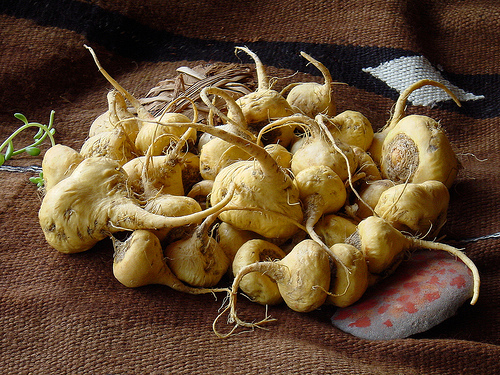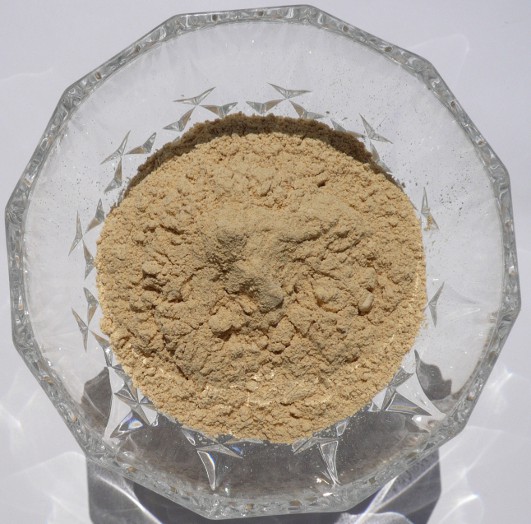


Legend has it that during the Inca Empire, the army used to add maca root to their food before going to battle, which made soldiers very manly. Besides, that the warriors that did well in combat would receive maca as a prize for their heroic accomplishments.
Maca (lepidium meyenii) is a cruciferous plant and its root resembles a turnip head, measuring 4-7 cm in diameter, colour ranging from from bright yellow to dark brown. Maca root grows in the Peruvian Andes above an altitude of 3500 meters, enduring temperatures ranging from 20ºC to -25ºC, therefore being considered an adaptogen.
Maca root was used by the Inca people to revitalize the body and curb hunger in isolated populations representing up to 2/3 of their diet.
Maca root, also commonly known as Peruvian ginseng, is rich in carbohydrates, protein and fibers. Essential fatty acids are also present, as well as vitamin B complex, vitamin C, calcium, magnesium, phosphorus, iron and potassium. Maca root is considered so nutritionally rich that during the colonization of Peru the root was used as trade and served also as an offering to the gods.
 Due to its nutritional richness it is recommended for conditions that require energy and extra nutrients, such as mal-nourishment, fatigue, weakness or lack of concentration. It's therefore very useful to students, elderly people and athletes. The intake of peruvian maca root works as a tonic, invigorating all the body and the immune system.
Due to its nutritional richness it is recommended for conditions that require energy and extra nutrients, such as mal-nourishment, fatigue, weakness or lack of concentration. It's therefore very useful to students, elderly people and athletes. The intake of peruvian maca root works as a tonic, invigorating all the body and the immune system.
According to popular belief, maca root is also an aphrodisiac, therefore being known as the “Viagra from the Andes”. The Incas used maca root to stimulate fertility and sexual performance, as well as because of its benefits regarding menopause, breast feeding and menstrual, fertility and impotence problems.
Some studies [1] on maca root have been proving that this food can increase sperm mobility and amount as well as sex drive on humans. The root also appears to have positive effects on mood and is able to reduce anxiety.
In 2009, a study by Mark Stone and others [2] also investigated the effects of maca root on the physical and sexual performance of athletes. The study concludes that after supplementing with maca for 14 days, a group of cyclists achieved better results.Maca root is used for centuries by Peruvians as part as their daily diet. It is a food, not a supplement and as such, maca root is completely safe.
In Europe this food is available is powder or flour, because the root is dehydrated and ground.
Maca root is very easy to use in everyday life: it can be added to bread or cake dough (2 to 3 tablespoons), smoothies, gravies, yoghurts, breakfast cereals, sprinkled over rice, pasta or other meals.
[1] http://www.ncbi.nlm.nih.gov/pubmed/20090350
[2] http://www.ncbi.nlm.nih.gov/pubmed/19781622
Insert date: 2013-04-11 Last update: 2013-06-21
Comment
![]()
![]()
Other foods
Authors > Translators > Ana Soares
Authors > Contributor writers > Cristina Rodrigues